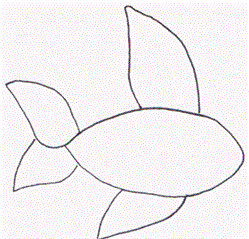
|
|
Glazing, in THE LEAD CAME METHOD
|
|
I begin by taking a copy of the pattern and placing it on my workbench. For the pattern I am using, which is some sort of fish, I use a small variety of lead came in two different shapes, #8065 "U" and #8064 "H", which are listed in "METALS" on this site. I use the "H" shaped lead when two pieces of glass are side by side in the design. The edges of the adjacent glasses are separated by this double channel. I use the "U" shaped around the very edges of the project to give a finished look. If the lead has been coiled into a tight circle, I straighten it by stretching it between two pairs of pliers, or by using a lead straightener. See "HAND TOOLS & APPURTENANCES". If the channel has been crushed, I open it up by running the pointed end of an ordinary lead pencil along the groove to open it up again.
|
|
Click to see more
|